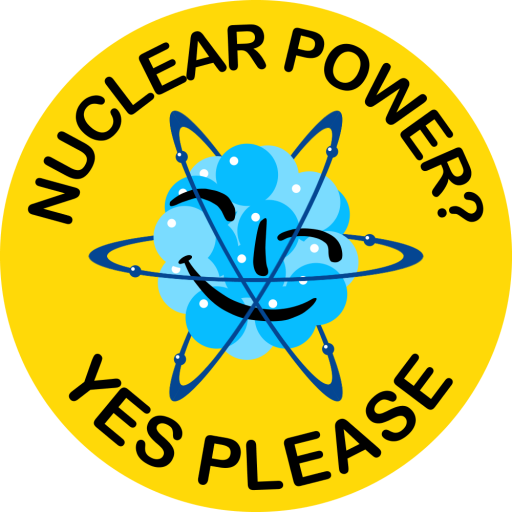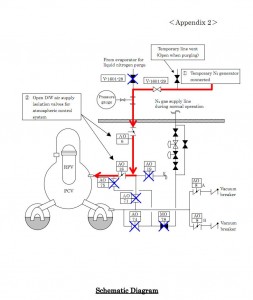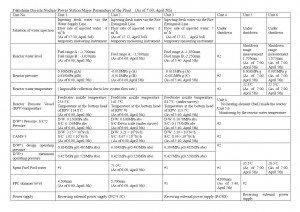Last updated on March 1, 2013
21:00(CET)/19:00(UTC)/04:00(JST)
NISA has released a very well done summary of the events so far, I highly recommend reading it!
The event of today was that TEPCO started injecting nitrogen gas into the containment of reactor number 1. The nitrogen is injected in order to prevent the possibility of combustible mixtures of hydrogen and oxygen to appear. The nitrogen injection slightly raised the pressure of the containment as could be expected, the rise in pressure also shows that the containment is fairly tight and not leaking much, if anything at all.
The temperature of the feed water nozzle in reactor number one continues going down. Now it is down to 216.3 degrees Celsius, 4 degrees less than yesterday. Pressure continues to climb, now at 859 kPa, up from 733 kPa yesterday.
The other two reactors are pretty much unchanged, TEPCO is planning to fill those containments with nitrogen as well. Dose rates within containments are on a falling trend, probably consistent with I-131 decay.
In a press release today related to the nitrogen injection TEPCO confirms that they suspect that the pressure vessels of the 3 reactors might be leaking. Which explains why they want to inject the nitrogen. They also write that there is some damage to the number 1 containment, something they haven’t stated before.
IAEA states that they see early signs of recovery at the Fukushima Daiichi plant:
”There are early signs of recovery in some functions such as electrical power and instrumentation,” Denis Flory, IAEA deputy director general and head of the department of nuclear safety and security, said at a press conference.
Nevertheless the situation at the plant ”remains very serious,” he added.
The new quake that occurred today did not have any reported impact on the Fukushima reactors. Overall another baby step towards control of the situation has been taken.
Links(English)
Reuters Major aftershock shakes Japan’s ruined northeast coast
World Nuclear News New earthquake disrupts grid power
Blogs(English)
Atomic Power Review Nitrogen inerting drywells..
All things nuclear How Many Cancers Did Chernobyl Really Cause?
NEI Nuclear Notes Here Comes Tomorrow
NEI Nuclear Notes Thursday Update
Links(Swedish)
Expressen Arbetare på kärnkraftverket i Fukushima evakuerades
DN Tsunamivarning i Japan drogs tillbaka
SvD Kärnkraftverk utryms efter nytt skalv idag
Blogs(Swedish)
Kunskapssamhället Glas stoppar läcka i Fukushima





Warning: Declaration of Social_Walker_Comment::start_lvl(&$output, $depth, $args) should be compatible with Walker_Comment::start_lvl(&$output, $depth = 0, $args = Array) in /var/www/nuclearpoweryesplease.org/public_html/blog/wp-content/plugins/social/lib/social/walker/comment.php on line 18
Warning: Declaration of Social_Walker_Comment::end_lvl(&$output, $depth, $args) should be compatible with Walker_Comment::end_lvl(&$output, $depth = 0, $args = Array) in /var/www/nuclearpoweryesplease.org/public_html/blog/wp-content/plugins/social/lib/social/walker/comment.php on line 42
There has been reports about very high radioactivity in water in some spots. Isn’t that peculiar. Or is it debris in the water that trigger these high numbers
By now, there relay _should_ be loads of quality checked data on ground contamination and air quality. Radioactive particles and gases in the air are a bit hard to measure after the fact.
Besides being a disaster, Fukushima is a tremendous learning opportunity. It is very seldom you get this costly “experiments” done.
On another note, do the Japanese have a sloppy attitude to diesel generators?
“The Japanese government, meanwhile, ordered reactor operators on Saturday to bring in additional emergency diesel generators, as the aftershock again demonstrated the potential for such events to shut down portions of the power grid.
The new government order came after problems were reported at two other nuclear power plants, both run by the Tohoku Electric Power Company. The plants suffered temporary losses of cooling to spent fuel pools, electricity cutoffs and problems with backup diesel generators after Thursday’s aftershock.
The Higashidori plant lost all outside power. Although it had three backup diesel generators, two were out of service for periodic maintenance. The remaining one worked for a while, but later, after some outside power was restored, it stopped because some of its oil spilled out. ”
“Japan Orders Nuclear Plant Operators to Obtain More Emergency Generators” By ANDREW POLLACK and MATTHEW L. WALD
http://www.nytimes.com/2011/04/10/world/asia/10japan.html?_r=1&ref=world&pagewanted=all
And regarding the waste water, they should go buy a mid sized oil tanker or two, so they can store it.
Finally, by now there should be filters for venting the containments at Fukushima.
There are several variants possible, eg filters based on sand beds, multi venturi systems, low tech gravel beds, metal filters, etc.
I my self am partial to the gravel bed since it is so… simple.
The lack of data of how widespread ground contamination is is very frustrating. It wont be much of a problem to measure it afterwards though since Cesium stay so long and it seems like they have a pretty good check on Iodine. Main problem seems to be that the information has not been compiled in a user friendly manner yet. I guess NISA’s first priority is not to give extensive data to the public on top of what is needed for safety related matters.
I think installing filters at this point would be exceedingly hard, they would have to get to the pipes that are used for venting and I would imagine those pipes are very radioactive, but I do wonder if they are even considering the possibility.
Without knowing how deep the port is outside of Fukushima its hard to tell if they could fit an oil tanker there. They are certainly on the right path though with the barges. But I really wonder how hard it would be to excavate a few temporary pools on site. It’s always easy to speculate from the other side of the world I guess.
It is at least much less stressful to be on the other side of the world from the accident.
On the other hand, by now, there have been time to airlift in just about anything that could help with the situation, from the other side of the world even.
It seems hard to reconstruct air data afterwards. Just ask Sweden, France and USA to start measuring, compiling, and presenting the results.
The medium sized oil freighter would not need to be taken into the actual port, just anchor it, and bring some long flexible hoses.
I am naively thinking of constructing a huge Fukushima Vacuum Cleaner (Not TM yet). Get a bulk barge, fill it with absorbent’s of some kind (gravel?). Get big fans and some flexible large diameter hoses (comparable to what is used for venting fire gases when fighting fires). Pump air through absorbent’s. Hope you did not waste too much money on a really tiny benefit. Send bill to someone else.
Heh… during the more lighthearted moments we have been dreaming about starting an enterprise – NPYP Shovel & Gravel AB – to sell pressure relief filters (FILTRA) to both swedish (only Barsebäck has one) and foreign reactors. 😉